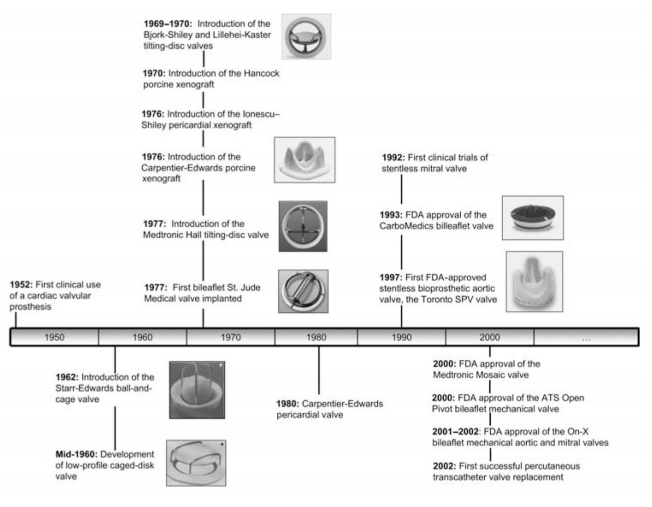History
of the Mechanical Valve
Artificial
heart valves have been used for decades in the medical field to replace and fix
damaged and poorly functioning heart valves. Currently, there are two main
classes of artificial heart valves: mechanical heart valves and bio-prosthetic
heart valves. The first mechanical heart valve replacement was performed by
Hufnagel in 1952 with the caged-ball design. This design can allow for a small
gap to form between the ball and cage causing mild regurgitation. The success
and feasibility of heart valve replacement was aided by the necessary use of
the heart lung bypass machine during surgery. The early designs of the
mechanical heart valves had many setbacks even though they can still be chosen
to be used by surgeons today. In the late 1960s, the more efficient tilting-disk
design was introduced. Most recent designs are based on the bileaflet
mechanical valve design. This design has three regions for blood flow. As blood
travels down the valve, bloodflow is more evenly distributed. Minimal backflow
can occur, but it is much less than in previous models. In 1966, pyrolytic
carbon was introduced with the bileaflet design. This material is now the
material of choice for mechanical heart valves because it is biocompatible,
thromboresistant and wear resistant. Many improvements are continually
attempted on the bileaflet pyrolytic valve design. The mechanical valve though
successful, however, requires life-long dependence on anticoagulants or anticoagulation
therapy and can cause bleeding. In contrast, the bioprosthetic heart valve can
have less risks if successful. The use of the tissue heart valves began with
the first Ross Procedure in 1967 where the patient’s own pulmonary valve was
used to replace their failing aortic valve. The latest developments in using
tissue heart valves have been the successful implantation of porcine and
pericardial valves into human hearts.
 |
| Timeline of important events in the development of artificial heart valves Source of History of Artificial Heart Valves |
No comments:
Post a Comment